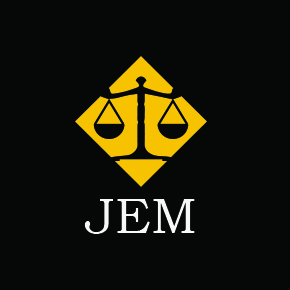Justice and Equality Movement facts for kids
Quick facts for kids Justice and Equality Movement |
|
|---|---|
| حركة العدل والمساواة Participant in the War in Darfur, the conflict in South Kordofan and Blue Nile and the Second Libyan Civil War |
|
 |
|
| Active | 2000–present |
| Ideology | Islamic democracy Populism Federalism |
| Leaders | Khalil Ibrahim (2000–2011) Gibril Ibrahim (2012–present) |
| Area of operations | Darfur & Kurdufan, Sudan Libya |
| Part of | Sudan Revolutionary Front |
| Allies | Sudan Liberation Movement/Army Liberation and Justice Movement |
| Opponents | Sudanese Armed Forces (until November 2023) Janjaweed and Rapid Support Forces |
| Battles and wars | War in Darfur Sudanese conflict in South Kordofan and Blue Nile Libyan Civil War (2014–2020) |
The Justice and Equality Movement (JEM) is a group in Sudan that has worked to bring about changes in the country. It was started by Khalil Ibrahim. His brother, Gibril Ibrahim, has been the leader since January 2012, after Khalil passed away in December 2011. The JEM wanted to see the former President of Sudan, Omar al-Bashir, removed from power. They also supported big changes to the government across the whole country.
Contents
How JEM Started and How it Works
The Justice and Equality Movement began with ideas from a book called The Black Book: Imbalance of Power and Wealth in the Sudan. This book was published in 2000. It talked about what the authors saw as unfairness in how power and money were shared in Sudan. Khalil Ibrahim, who founded JEM, was one of the people who wrote this book.
JEM says it has about 35,000 members. They claim their members come from many different ethnic groups. However, some people say that most JEM members, including its leader, are from the Zaghawa tribe. The JEM is part of the Sudan Revolutionary Front (SRF). This is a group of different organizations that are against the Government of Sudan.
JEM's Actions and Conflicts
Attacks in Haskanita
In September and October 2007, JEM groups attacked the African Union Mission in Sudan in a place called Haskanita. Some JEM leaders faced investigations by the International Criminal Court (ICC) for their actions during these events. The case against one leader, Bahr Idriss Abu Garda, was dropped because there wasn't enough evidence. Another leader, Saleh Mohammed Jerbo Jamus, had his case dropped after he was believed to have died. As of 2019, Abdallah Banda Abakaer Nourain was still wanted by the ICC.
Oilfield Operations
In October 2007, the JEM attacked the Defra oilfield in the Kordofan region of Sudan. This oilfield was controlled by a group led by a Chinese company. The next month, many Chinese engineers came to Darfur to work at the Defra field. Khalil Ibrahim told reporters that JEM was against them coming. He said that the Chinese were only interested in Sudan's resources, not human rights. JEM believed that the money from oil sold to China helped fund the Sudanese government and the Janjaweed militia.
On December 11, 2007, Khalil Ibrahim said that JEM forces fought and defeated Sudanese government troops. These troops were guarding a Chinese-run oilfield in the Kordofan region. However, officials in Khartoum said that no oilfields had been attacked. Ibrahim stated that this attack was part of JEM's plan to remove Chinese-run oilfields from Sudan. He said that JEM wanted all Chinese companies to leave because they had been warned many times.
Battles in Khartoum and Other Areas (2008–2013)
In May 2008, JEM carried out a very well-known operation against the Sudanese government. They attacked the capital city of Khartoum. JEM made good progress, even taking control of the city of Omdurman for a short time. They also controlled the airport at Wadi Sayedna military base, which is about 10 kilometers north of Khartoum. They also took control of three bridges leading into the capital. The operation ended with intense fighting in western Khartoum. The government used army helicopters to push back JEM.
After this battle, a JEM leader, Eltahir Elfaki, said that the conflict would now be fought across the whole country. He explained that JEM was a national movement with goals for the entire nation. Khalil Ibrahim also said that this was just the beginning. He stated that the goal was to end the current government.
In April 2013, JEM and its allies in the Sudan Revolutionary Front had several successful attacks against Sudanese government forces. They worked together, using about 20 vehicles, to briefly take control of the important city of Um Rawaba. This city is in North Kordofan, about 300 miles south of Khartoum. As part of their plan, JEM and the SRF also took control of Abu Korshola. This is a town of 40,000 people in South Kordofan. To get control back, the Sudanese Armed Forces launched many air raids. On May 27, the opposition groups pulled back. This allowed humanitarian aid to reach the people living in the area. Throughout 2013, the opposition forces continued their attacks. This led to many casualties for Sudanese forces around Abu Korshola.
Peace Agreement in August 2020
The Justice and Equality Movement signed a peace agreement with the Transitional Government of Sudan on August 31, 2020. This means JEM will now be part of the transition to democracy in Sudan. They will work towards peace through peaceful ways.
Under the agreement, the groups that signed it will get three seats on the sovereignty council. They will also have five ministers in the transitional cabinet. Plus, they will get a quarter of the seats in the transitional legislature. At a local level, the groups will get between 30% and 40% of the seats in the temporary legislatures of their home states or regions.
See also
 In Spanish: Movimiento Justicia e Igualdad para niños
In Spanish: Movimiento Justicia e Igualdad para niños

